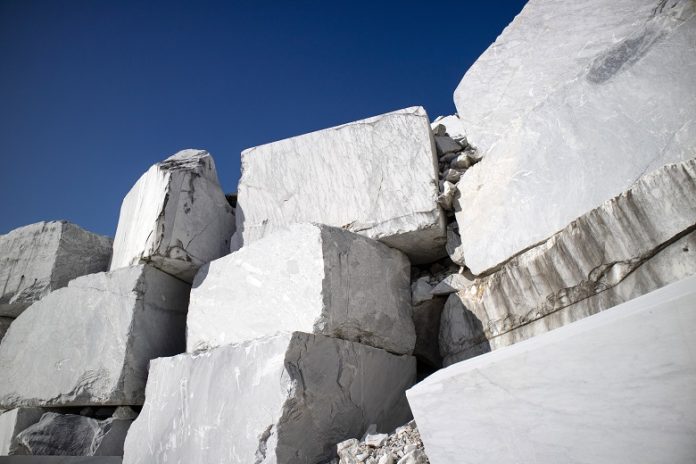Oman’s Ministry of Energy and Minerals is formulating a strategy to fuel exports of marble and gypsum — two industrial minerals that have exemplified the promising potential of the Sultanate’s mining and mineral processing sector.
While marble production declined slightly in 2019 (versus figures for 2018) due to a slump in demand on account of the global economic downturn, gypsum output on the other hand maintained its robust growth trend. Oman is currently the world’s largest exporter of gypsum — a mineral used primarily in cement production, as well as in the production of gypsum board.
According to figures published by the Central Bank of Oman (CBO), marble production dipped 11.9 per cent to 1.183 million tonnes in 2019, down from 1.269 million tonnes a year earlier.
Gypsum production, on the other hand, climbed 10.3 per cent to 10.663 million tonnes last year, up from 9.666 million tonnes in 2018.
“The mining sector is one of the five promising industries in the country to lead economic diversification under the government’s plan,” the Central Bank said in its 2019 Annual Report published earlier this week. “Endowed with geographical diversity, the initial estimates indicate that most of the Sultanate’s mineral reserves — estimated at 97 per cent of the total estimated resources in the country in 2018 — have not yet been exploited.”
With construction sector activities contracting significantly on account of the downturn, building materials output plummeted 26 per cent to 32.0 million tonnes last year, down from 44.9 million tonnes in 2018.
“Building materials constitute 58 per cent of total output with output coming from 172 operating quarries — remained the most significant category in the minerals production,” said CBO in its annual report.
“Limestone, marble and gypsum together represented 90 per cent of the remaining production.
“A total of 285 quarries are distributed in the Sultanate around the northern mountains and the southern mountains. The largest number of quarries are in Al Batinah North Governorate (56), followed by Al Dakhiliyah with 48 quarries and Dhofar with 40 quarries,” it stated.
Production of limestone — a key ingredient in steel manufacturing and chemicals — plunged 31 per cent to 9.67 million tonnes in 2019, down from 14.02 million tonnes a year earlier.
Chromite ore output tool fell 31 per cent to 885K tonnes, down from 607K tonnes in 2018.
Other minerals that posted a dip in their output included: laterite 508K tonnes (- 7.7 per cent), quartz 265K tonnes (- 14.3 per cent), magnesium 33K tonnes (-26 per cent) and kaolinite 12K tonnes (- 88.7 per cent).
However, some minerals boosted output during the year. Clay production soared 44 per cent to 460K tonnes in 2019, sand to 48K tonnes (51 per cent) and silica 21K tonnes (14 per cent). Auguring well for the strong growth of the mineral sector are a number of initiatives designed to enhance the industry’s investment appeal, the apex bank said.
The new Mineral Resources Law, which came into effect in March 2019, provides a framework for sustainable development and commercialisation of Oman’s natural resources.
Currently under implementation are as many as 15 strategically important proposals and initiatives outlined for the growth of the sector under the landmark Tanfeedh programme.
They include the Mining Blocks initiative under which 15 mineral blocks have been pre-approved for auction. “One of these blocks is Mawarid’s Ghuzayn Underground Mine which is the largest copper discovery in Oman and the first unique advanced underground copper project,” the report said. Further, in a move to maximise the economic value of the sector, the ministry is preparing an investor guide designed to help investors conduct mining activities in prospective areas. Additionally, the ministry is in the process of establishing an E-Mining Platform and an e-management system in support of its national mining strategy, dubbed Ada’a.
Source: www.omanobserver.om





































